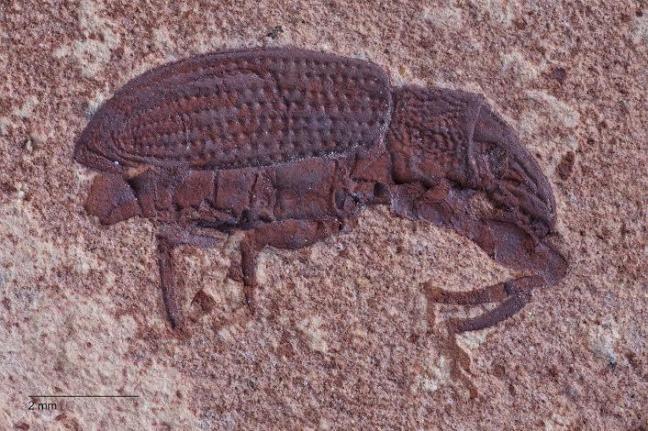Beetles Mostly Immune To Mass Extinction Events

BOULDER, Colo., March 18 (UPI) — Why are there so many kinds of beetles today? Scientists say it’s likely because the insect group is especially resistant to extinction.
Most of the research into the diversity of beetle species has focused on finding mechanisms of speciation — the biological pressures that spur adaption, variation and ultimately new species. But new research suggests avoiding obliteration might be equally as important.
“By looking at the fossil history of the group, we can see that extinction, or rather lack of extinction may be just as important, if not more important, than origination,” lead study author Dena Smith, a paleontologist and curator at the University of Colorado Museum of Natural History, explained in a press release. “Perhaps we should be focusing more on why beetles are so resistant to extinction.”
To examine the hypothesis that a resistance to extinction might enable biodiversity, Smith and her co-author Jonathan Marcot, a biologist at the University of Illinois, did a comprehensive scan of the fossil record — from modern discoveries to as far back as 19th-century digs. They identified a total of 5,553 beetle species, unearthed from 221 unique locations.
In analyzing the evolutionary record, the scientists were able to show that the majority of modern beetle families extend back through the fossil record.
The discovery isn’t so much a rejection of attempts to locate speciation or origination, but a complement. The same adaptable qualities that have allowed family lines to avoid collapse, likely also inspire biological differentiation.
“There are several things about beetles that make them extremely flexible and able to adapt to changing situations,” Smith said, citing the specifically the process of metamorphosis.
“This means that they can take advantage of very different types of habitats as a larva and then as an adult,” she explained. “Adult beetles can be highly mobile and research that has focused on glacial-interglacial cycles has shown that they can move quickly in response to any climate fluctuations.”
Smith said she hopes the work of her and her research partner inspire other entomologists to use the fossil record as a resource and inspiration for new scientific investigations.
“I think people have been hesitant to jump into studying insect fossils because there has been the misperception that they are so fragile and rarely fossilize,” Smith added. “I am hoping that this study demonstrates that the fossil record is quite good and can be used in many ways to study the evolution of this diverse and important group.”
The new study was published this week in the journal Proceedings B.





